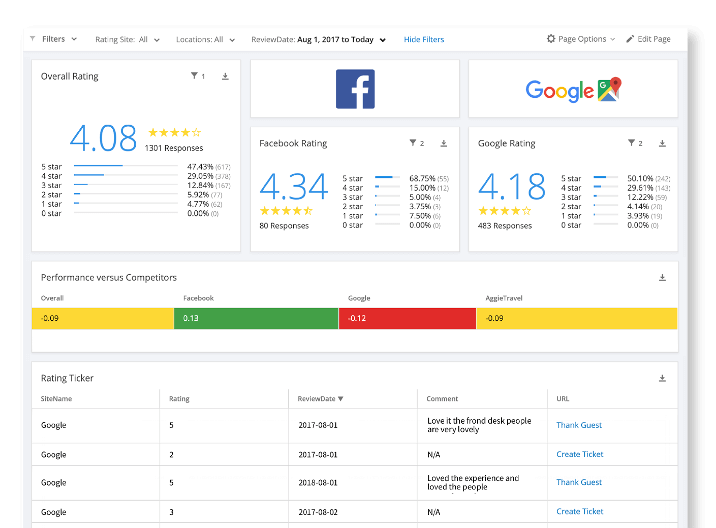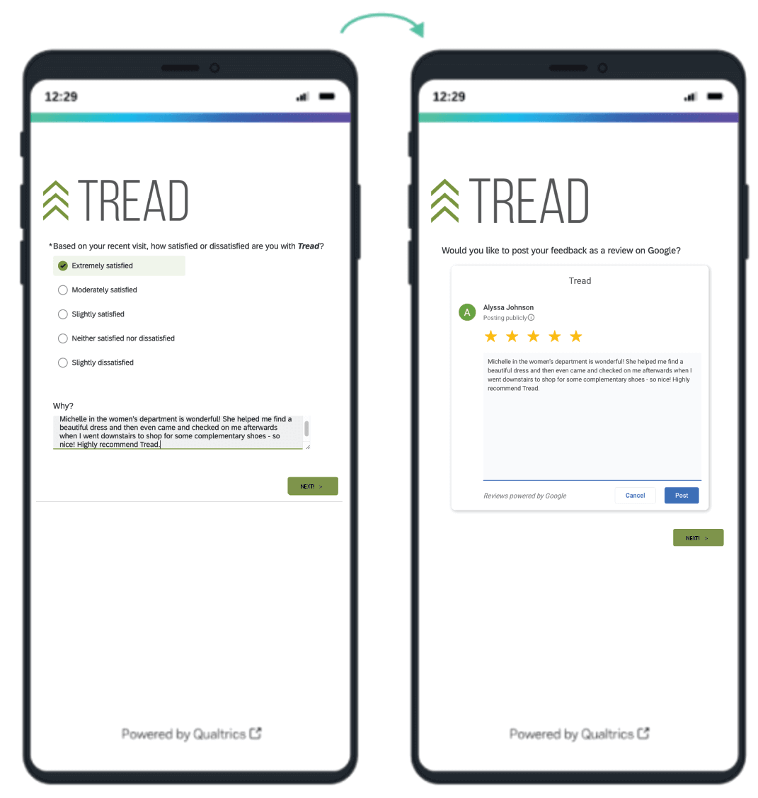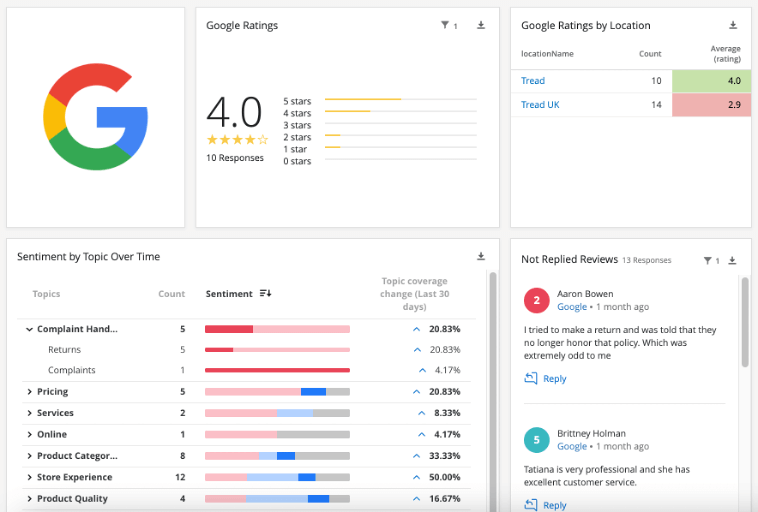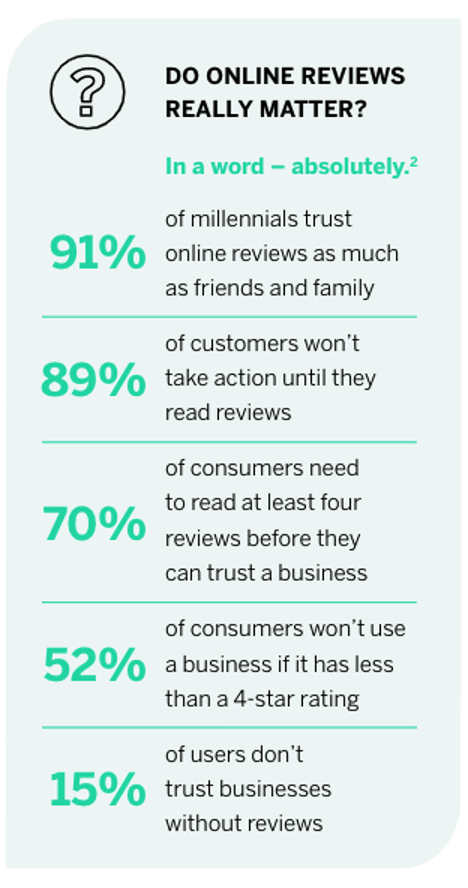What is online reputation management?
As the name suggests, reputation management is the practice of owning and influencing your own reputation or that of an organisation or person. It’s a practice that originated in the world of PR, at a time when consumers learned about brands through either advertising, media coverage or word-of-mouth.
With the growth of online media and communication and the widespread use of search engines such as Google, reputation management has since become much broader and has taken on an important digital dimension. With much of public opinion swayed by Google reviews, social media comments and more, customers’ opinions of a brand don’t need to be published in the media to have an influence. For example, Google accounts for almost 60% of all online reviews for businesses with a brick and mortar location.
Between social media, search engine results, user-generated content, reviews and more traditional media, there’s now a larger and more varied body of reputational content in the public domain than ever before. All of it can help or hurt a brand, whether it’s a Google review, the words of an individual Twitter user or a front-page news story.
The world of reputation management is now so large and diverse that it’s common for reputation management services to be specialised, for example offering online reputation management only. But it’s worth remembering that any and all reputational content has an impact on your business, and it’s important to take a holistic view across all possible channels when you’re developing a reputation management strategy.
See the Qualtrics online reputation management tool in action
Why does reputation management matter?
Does it really matter what someone says about you on the internet if your products are good and your prices are low? What is the value of a brand’s online reputation?
In fact, reputation management could be the difference between business success or failure. Despite this, a surprisingly small number of companies are investing significantly in building or maintaining a positive brand reputation. Over half of businesses describe their reputation management as “basic” or “non-existent.”
Why should your brand invest in online reputation management?
In a crowded marketplace where businesses compete on trust and loyalty rather than simply on sales, the way potential customers feel about your business has never been more important. Customers stick with brands they trust, and may even be less sensitive to price and willing to spend more on those brands they truly love.
What’s more, having a sense of shared values and ethics is crucial for customers. Harvard Business Review found that 64% of customers cited shared values as the primary reason for having a relationship with a brand. If these customers have their trust undermined by negative publicity, it may bring those relationships to an abrupt halt. Reputation management can help to minimise relationship breakdowns.
Why online reputation management is important
Online reputation management works by gathering information regarding your brand perception and providing you with the analysis necessary to tackle negative online reviews, social media comments and more. Being armed with this information means your brand isn’t passively accepting negative publicity – it’s demonstrating that it listens to problems that are flagged by customers, and then makes

Our own research has found that two-thirds of consumers think companies need to be better at listening to feedback, and more than 60% of consumers think brands need to care more about them. Most importantly, cared-for customers said they would buy more as a result. Online reputation management is more than just managing negative reviews – it’s about showing customers you care.
How to build, maintain and repair your brand reputation
Reputation management is a valuable skill for all kinds of companies. Whether you’re a new business starting from scratch, a popular brand looking to maintain a good reputation or you’ve fallen out of favour and looking to recover, there are steps you can take to add value and make progress.
So what exactly does an online reputation management strategy look like in practice?
Know what’s out there
Step 1: Choose your online reputation management tool
The baseline for any reputation management operation is knowing what people are saying about you. You need to listen and monitor carefully to understand what you’re doing well and be aware of any potential vulnerabilities.
Social media monitoring is naturally a big part of the picture. You will also want to keep an eye on search engine results for your brand and product names, and keep a close watch on Google reviews and other review sites as well. Depending on the size of your company, this could become a significant undertaking. This means using the right software to scour the web effectively.
Reputation management software that helps you automate your monitoring and collate findings on a single platform is a valuable investment. It should be able to integrate data from search results, digital reviews, social media platforms and other brand management tools for a comprehensive understanding of your brand’s online presence.
Your online reputation management tool should be able to not only track what’s being said about you and where, but what sentiment is being expressed in each review. You should be able to track trends in how people feel about your brand over time as well, using numerical values for sentiment. For example, a 5-star Google review translates as a very positive review.

Step 2: Gather your data from external sources
Your online reputation encompasses many platforms and sources that you don’t control: social media accounts, search results, news articles, major review sites and more. Knowing what’s being said about you on these platforms makes it easier for you to plan outreach, such as responses on review sites, social media marketing campaigns addressing core problems and PR efforts to tackle bad press.
You should monitor brand mentions and product mentions across all of these platforms with sentiment analysis to understand where unhappy customers are and what has driven their poor reviews. Ideally, your online reputation management tool is able to automatically assign sentiment.
Step 3: Gather data from sources you control
There’s only so much information about your customers’ motivations that you can gather from online reviews. Ideally, you should be able to understand the underlying reason for a customer’s feelings in their own words.
Factoring in the feedback you receive directly in the form of customer communications can help to find that information. Soliciting customer feedback using surveys, intercepts or other buttons is a useful way to fill any gaps in your understanding and find out more about areas where you know there are potential issues.

Your online reputation management software should be able to take data from both solicited and unsolicited information to build out a full picture of your online reputation. You should also encourage customers who are sharing feedback on platforms you own to those you don’t.
Respond effectively
Step 4: Be ready to respond to online reviews and social comments
As well as listening carefully to what customers think and feel, you should be ready to respond promptly when negative feedback appears. Negative reviews can hold a lot of weight for potential customers and can damage your brand’s online reputation if left unaddressed. Additionally, positive reviews are worth highlighting to bolster an authentic brand image.
Although on the surface it may look like a problem, for forward-thinking businesses, negative customer experience data is an opportunity to improve performance, close the loop and win back a customer, potentially making the relationship even stronger than it was before.
Being prepared with an online reputation management strategy will help to tackle these negative reviews and online conversations without causing panic over any potential loss of business. When you develop your strategy in advance of issues, you ensure that you’re ready when the time comes that you need to use it.
Be sure that all your teams across location management, customer service, product, and sales know what’s expected of them when a problem arises, and give them the insights they need to tackle the core issue effectively. Your reputation management tool should be able to automate workflows to ensure that you can instantly set actions in motion and reduce the burden on your teams.

For example, you could set up an alert to automatically trigger a response if users in Chicago have left a Google review that’s negative. Perhaps you’ve just launched a new outlet there and need positive reviews to ensure its success. By automatically responding to a negative review, you’re able to potentially avert a reputational disaster.
Step 5: Close the loop
When a customer contacts you directly with a complaint or question, they’re looking for you to respond and react quickly and empathetically. When they leave a negative online review, they are often looking for a remedial action.
Much of your digital reputation will be eroded when a customer feels you haven’t met their expectations, so make sure you close the loop and encourage customers to share how you resolved their issue.
Don’t wait until a customer has started online conversations about how your brand let them down – close the loop while they’re still in their initial customer journey and give them a reason to shout about how great you are at resolving problems and concerns.
It’s not just about closing the loop on a public or customer level – you’ll also need to ensure that you close the outer loop within your business. Your processes and policies may need to change to result in better reviews and an improved reputation, so make sure you evaluate internal approach as well.
Step 6: Be proactive
When someone leaves negative comments or a bad review, they’d almost always prefer to have their issue resolved. You can proactively reach out to detractors on social media and review sites, responding to their points and opening a channel of communication. Tackle negative reviews by reaching out and offering solutions as well as sympathy, and they may just end up recommending you, improving your online reputation.
Reputation management software from Qualtrics gives you the benefit of integrating with multiple third-party platforms, so you can use a single centralised system to make contact with the customer wherever they are.
Step 7: Evaluate your brand experience
Customer experience management is a crucial part of shaping your online reputation. Once a customer has experienced your brand across one or many touch points – social media channels, the purchase process, your customer service portal – they’ll develop opinions that they might share as online reviews.
Developing a brand experience that takes into account customer feedback and negative reviews and actively tackles problems will go a long way to creating a positive online reputation. If customers feel that you meet (and exceed) expectations and are quick to fix problems when they arise, they’ll keep coming back and hopefully telling others about their positive experiences.
Promote your positives and seek out trends
Step 8: Actively promote the positive aspects of your brand
Online reputation management isn’t just about negative feedback. It also means spreading the word about your brand mission and values, the good things you’re achieving and the reasons customers can feel confident building a business relationship with you.
When created with search engine optimisation in mind, this can help to reduce the impact of negative search results. Spreading positive content not just on the channels you own, but promoting a positive online reputation through sources such as positive news stories and social media marketing can help to build your reputation.
Step 9: Solicit positive reviews
Encourage your customers to leave you positive feedback in places that will have the greatest effect. Positive Google reviews can be instrumental in improving your online reputation, so make it easy and seamless for your customers to leave a great Google review.
Using integrations such as Google Connect allows your survey respondents to quickly publish a Google review with little extra effort. Simply embed Google Connect in the feedback of your choice, and your respondent can see an auto-populated comment and score based on their review. One click to approve and it’s published. Don’t waste time trying to get motivated customers to leave you great public feedback – make it simple for them to help you on your reputational journey.
Step 10: Forecast potential trends and get on board
Your online reputation management will benefit greatly if you shift your management from a responsive position to a proactive one. Identifying potential trends that your brand can connect with can help you to encourage positive reviews over time. For example, if “eco-friendly” and “socially responsible” are trending as key terms, you can highlight those aspects of your business across your social media accounts and other marketing. Seeking out and taking action on positive trends, rather than just tackling negative search results, can go much further than hoping for a few positive reviews.
The value of transparency and honesty
One key term that often comes up in conjunction with online reputation management is transparency. Being open and honest about who you are and what you believe in as a business is a strong strategy – especially in a world where information flows freely and barriers between the public and private are growing. Consumers think so too: a reported 86% of consumers believe that transparency from businesses is more important than ever before.
Transparency also applies when there are negative online reputation issues to be managed. Businesses who make mistakes, let standards slip or encounter controversy tend to fare better when they are open and accountable, rather than staying silent about problems or attempting to bury the bad news.
Of course, this doesn’t mean you should take a “no-filter” approach to communication. It’s less a case of saying exactly what’s on your mind, and more about being consistent with your company values. This means promoting an internal culture where those values are lived and breathed, whether in dialogue with customers, in making business decisions or in choosing how you handle online reputation issues.
3 real-life lessons from online reputation management company stories
Nike
It may be hard to believe today, but in the 1990s, sports giant Nike was the subject of global protests and boycotts. The issue: labor conditions in developing markets. While poor employee treatment in overseas supplier factories was –and still is – an industry-wide problem, Nike bore the brunt of the outrage, becoming a symbol of the issue.
Fortunately, the brand hit on a turn-around strategy that would see them through the crisis. A program of investigation and inquiry began, followed by a policy of total transparency and internal cultural change that made a lasting impact on textile industry standards. Nike wasn’t able to solve the problem right away, but its transparency and response to feedback helped it to regain ground and maintain its position as a market leader. Today, its reputation online and in general is great.
Ryanair
The European budget airline saw the serious effects of a poorly perceived customer experience when profits dived and share prices plummeted 13% in November 2013. Keen to repair the damage, the brand pivoted away from its habitual stance of publicly unabashed profiteering and launched a new online reputation management campaign of customer-friendly improvements, “Always Getting Better.” The new reputation management approach was a success, and by 2014 the brand was able to announce that its profits had increased by a third.
KFC
In 2018, an almost unthinkable problem befell KFC UK – the fried chicken chain ran out of… chicken. Supplier problems led to branches being unable to serve the majority of their normal menu items, leaving customers frustrated and confused. Their online reputation suffered.
Fortunately, the brand was quick to respond with a pitch-perfect communications strategy as part of an online reputation management drive. As well as unreservedly apologising for the gaffe, they ran some tongue-in-cheek advertising that prompted customers to empathise with their embarrassing predicament.
Online reputation management services and tools
We’ve designed the Qualtrics Reputation Management tool to support you in getting the best possible results from your online reputation management with the lowest possible effort.
Rather than using a separate online reputation management company, you can use tools that are fully integrated with the broader suite of Qualtrics products, allowing you to make online reputation management a natural extension of your experience management program.
There’s also integration support for a range of third-party platforms such as Google, so you can receive alerts, close the loop with customers and respond to feedback effectively without having to switch between channels.
Working at scale? Use Qualtrics iQ™ to bring the power of AI and statistics to your project and dig deeper into your findings, revealing insights that will help you shape your future reputation management planning.
See the Qualtrics online reputation management tool in action
